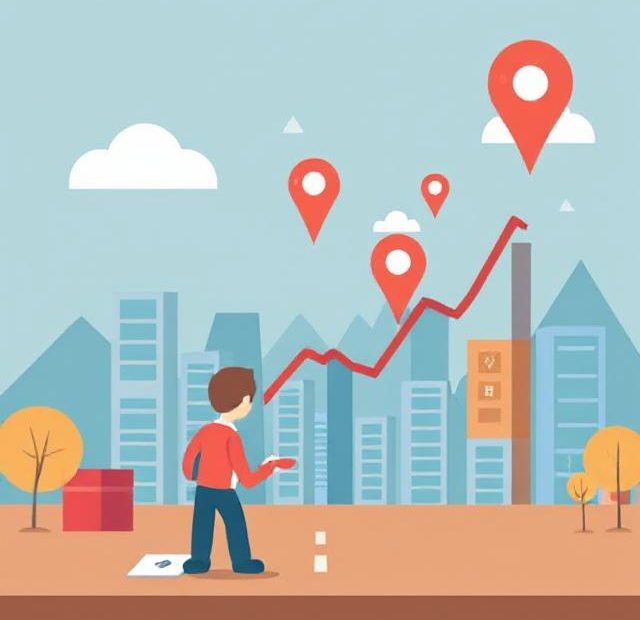Link building has always been one of the cornerstones of SEO. But when it comes to local SEO, the game is played by different rules. In 2025, local link building has become more nuanced, strategic, and essential than ever before. Whether you run a service-based business or a physical storefront, the truth about local link building can be the difference between dominating the map pack or getting buried in search results.
In this post, we’ll dive into the realities of local link building in 2025 — what works, what doesn’t, and how to build powerful, location-specific backlinks that drive both rankings and real-world customers.
Why Local Link Building Still Matters in 2025
Despite evolving algorithms and the rise of AI-assisted search, backlinks remain a top-ranking factor, especially for local businesses. But it’s not just about the volume of links — it’s about relevance, authority, and location.
Local backlinks send trust signals to search engines that:
-
Your business is active in the community
-
You are a relevant entity within a geographic area
-
You have credibility among local partners, organizations, and media
In 2025, Google has placed even more weight on contextual relevance, meaning a link from a local Chamber of Commerce or regional newspaper holds more SEO value than ten generic blog links.
The Big Myth: All Links Are Equal
One of the biggest misconceptions in local SEO is that a backlink is a backlink. That’s no longer true in 2025.
Google now uses advanced contextual mapping to evaluate:
-
The geographic proximity of the linking domain
-
The topical relevance of the linking content
-
The legitimacy of the site (Is it a real business, an Active community organization, or a News site?)
This means that a link from a local high school’s community board or sponsor page could boost your rankings more than a backlink from a national SEO blog, because it confirms your presence in that location.
Where to Get High-Value Local Backlinks in 2025
Here’s where the real SEO pros focus their local link-building efforts this year:
1. Local News and Media Sites
Even in the age of AI content, local journalism thrives. Small-town newspapers, local radio stations, and city-focused news blogs often publish stories about:
-
Community events
-
Business launches or expansions
-
Public interest stories (charity drives, unique services, etc.)
Strategy: Pitch a story, sponsor a segment, or write a press release highlighting a local achievement.
2. Chambers of Commerce and Industry Associations
Most cities and towns have a Chamber of Commerce, and membership often includes a listing (with a link) on their website.
Bonus: These are high-trust domains and excellent for referral traffic, not just SEO.
3. Local Event Sponsorships
Sponsoring a community 5K, street fair, or charity auction not only builds goodwill but usually includes a link from the event page.
Tip: Ask if you can be listed with your business name, link, and description on the event’s sponsor page.
4. Local Blogs and Influencers
In 2025, micro-influencers and bloggers in your city carry SEO weight. Their websites often have strong engagement, and Google values niche relevance.
Example: A Denver food blogger linking to your restaurant’s event = local gold.
5. Local Directories with Authority
Not all directories are spammy. The right ones can deliver value:
-
City.gov business listings
-
Regional business hubs
-
Hyperlocal directories (e.g., “SmallBizLA” for Los Angeles)
Avoid low-quality, outdated directories. Focus on those with active traffic and moderation.
6. Local Schools, Charities, and Community Centers
Nonprofits and schools often link to businesses that:
-
Sponsor an event
-
Donate products/services
-
Volunteer
These .org or .edu backlinks carry heavy trust weight.
7. Local Business Collaborations
Team up with complementary businesses (not competitors). Example:
-
A wedding photographer links to a local florist
-
A roofing company links to a solar panel installer
You can co-create content like blog roundups, local guides, or case studies.
How AI Impacts Link Evaluation in 2025
Search engines now use natural language processing and entity recognition to better understand the true context of links. This means:
-
Anchor text matters less if the surrounding content clearly defines your business type and location.
-
Links from semantically-related content (even without a perfect match keyword) still count.
So don’t obsess over “exact match anchor text.” Focus instead on getting real, location-tied mentions in trusted contexts.
What No Longer Works
Let’s clear the air — here’s what you can stop wasting time on:
-
Generic directory submissions with no local focus
-
Buying backlinks (still risky and easily flagged)
-
Spinning content for link exchanges
-
Mass guest posting on irrelevant blogs
In 2025, authenticity beats automation every time.
Tracking Local Link Success
Use tools like:
-
Ahrefs or SEMrush to monitor backlinks and domain authority
-
Google Search Console to track local keyword performance
-
BrightLocal to track local pack visibility
Pro Tip: Set up Google Alerts for your brand + city (e.g., “Best Cleaners in Austin”) to discover unlinked mentions and request backlinks.
Final Thoughts: Quality Over Quantity
The truth about local link building in 2025? It’s no longer a numbers game — it’s about earning trusted mentions from real local sources.
You don’t need hundreds of links. Just 10–15 high-quality, locally-relevant backlinks can elevate your business in the map pack and push your site to the top of city-level search results.
So ditch the shortcuts. Focus on real relationships, community involvement, and strategic outreach. The results will speak for themselves.
Also, you can learn more about Local Customers here.
